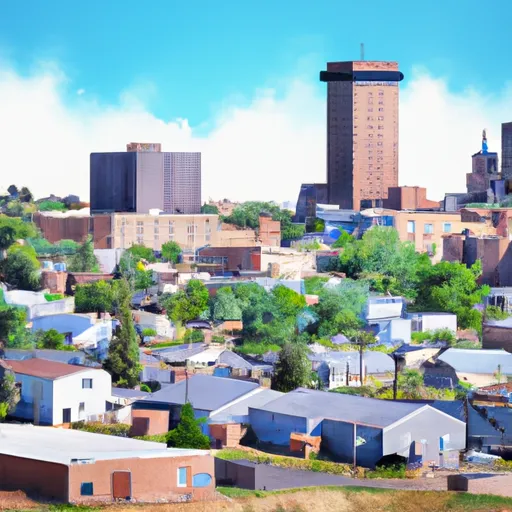-
 Snoflo Premium
Snoflo Premium
Get unlimited access to all our content
With no Ad interruptions! - Start Your Free Trial Login with existing account
Sedgwick
Eden Index
Climate
9.0
•
Recreation
1.4
•
Community
•
Safeguard
4.1/10

Sedgwick, Colorado is a small town located in Sedgwick County in northeastern Colorado. The town experiences a semi-arid climate with hot summers and cold winters. Summers are typically dry with temperatures often reaching the 90s Fahrenheit, while winters are cold and can drop below freezing, with occasional snowfall.
The hydrology constituents in Sedgwick are primarily influenced by the South Platte River, which runs along the southern edge of town. The river provides a water source for irrigation and agricultural activities in the region. Additionally, Sedgwick is located near several reservoirs and lakes that offer opportunities for fishing, boating, and water sports.
Outdoor recreation opportunities in Sedgwick are abundant. The town is surrounded by vast open spaces, making it a great destination for hiking, camping, and wildlife viewing. The region is known for its diverse bird population, making it a popular spot for birdwatching enthusiasts. Hunting is also a popular activity, with opportunities for hunting deer, elk, and other game species in the surrounding areas.
Overall, Sedgwick offers a unique combination of outdoor recreation opportunities, a semi-arid climate, and access to water resources, making it an attractive destination for nature lovers and outdoor enthusiasts.
What is the Eden Index?
The Snoflo Eden Index serves as a comprehensive rating system for regions, evaluating their desirability through a holistic assessment of climate health, outdoor recreation opportunities, and natural disaster risk, acknowledging the profound impact of these factors on livability and well-being.
Climate Health Indicator (CHI): 9.0
Sedgwick receives approximately
454mm of rain per year,
with humidity levels near 69%
and air temperatures averaging around
11°C.
Sedgwick has a plant hardyness factor of
5, meaning
plants and agriculture in this region thrive during a short period during spring and early summer. Most
plants will die off during the colder winter months.
By considering the ideal temperature range, reliable water supplies, clean air, and stable seasonal rain or snowpacks, the Climate Health Indicator (CHI) underscores the significance of a healthy climate as the foundation for quality living.
A healthy climate is paramount for ensuring a high quality of life and livability in a region, fostering both physical well-being and environmental harmony. This can be characterized by ideal temperatures, reliable access to water supplies, clean air, and consistent seasonal rain or snowpacks.
Weather Forecast
Streamflow Conditions
South Platte
Area Rivers
South Platte
Snowpack Depths
South Platte
Reservoir Storage Capacity
South Platte
Groundwater Levels
Recreational Opportunity Index (ROI): 1.4
The Recreational Opportunity Index (ROI) recognizes the value of outdoor recreational options, such as parks, hiking trails, camping sites, and fishing spots, while acknowledging that climate plays a pivotal role in ensuring the comfort and consistency of these experiences.
Access to outdoor recreational opportunities, encompassing activities such as parks, hiking, camping, and fishing, is crucial for overall well-being, and the climate plays a pivotal role in enabling and enhancing these experiences, ensuring that individuals can engage in nature-based activities comfortably and consistently.
Camping Areas
| Campground | Campsites | Reservations | Toilets | Showers | Elevation |
|---|---|---|---|---|---|
| Harvester Park | 10 | 4,028 ft |
Catastrophe Safeguard Index (CSI):
The Catastrophe Safeguard Index (CSI) recognizes that natural disaster risk, encompassing floods, fires, hurricanes, and tornadoes, can drastically affect safety and the overall appeal of an area.
The level of natural disaster risk in a region significantly affects safety and the overall livability, with climate change amplifying these risks by potentially increasing the frequency and intensity of events like floods, fires, hurricanes, and tornadoes, thereby posing substantial challenges to community resilience and well-being.
Community Resilience Indicator (CRI):
The Community Resilience Indicator (CRI) recognizes that education, healthcare, and socioeconomics are crucial to the well-being of a region. The CRI acknowledges the profound impact of these elements on residents' overall quality of life. By evaluating educational resources, healthcare accessibility, and economic inclusivity, the index captures the essential aspects that contribute to a thriving community, fostering resident satisfaction, equity, and social cohesion.

